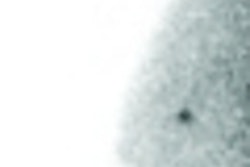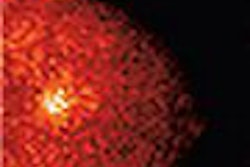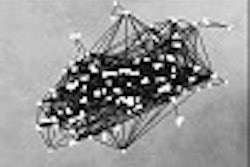In a new report, The Institute of Medicine predicts that getting the radiology profession to accept the idea of allowing specially trained techs to do prescreening or second reads of mammograms will be a challenge. Well, they certainly got that right.
The Washington, DC-based institute had not even released its report last week before the American College of Radiology sent out a press statement announcing its opposition to the reading suggestion. The proposal is one of 10 recommendations made in an IOM report titled "Saving Women's Lives: Strategies for Improving Breast Cancer Detection and Diagnosis."
"We agree with all the other recommendations, but this one we just can't agree with," said ACR chairman Dr. James Borgstede in an interview with AuntMinnie.com. "We don't believe that's in the best interest of quality, nor will it improve access."
The IOM report recommendation reads: "To expand the capacity of breast screening programs, mammography facilities should enlist specially trained nonphysician personnel to prescreen mammograms for abnormalities or double-read (mammograms) to expand the capacity of breast imaging specialists."
The IOM report noted that double-reading is known to improve sensitivity, but is generally unaffordable because Medicare won't reimburse for a second radiologist's read.
And while allowing nonphysicians to look at mammograms would raise liability questions, the report suggests that these could be overcome.
"Indeed, it is even conceivable that malpractice rates for radiologists could be lowered if they adopted the practice of double-reading made possible by supportive assistance from nonphysicians...with specialized training in mammography," the report stated.
The report cites a handful of studies that used nonphysician readers, including a couple from the U.K., where the practice is already established.
One six-week study at the University of Pittsburgh found that even without additional training, experienced RTs could classify screening mammograms as to their need for additional workup with "reasonable" accuracy. (American Journal of Roentgenology, January 2003, Vol.180:1, pp. 815-822)
An earlier experiment involving trained physician assistants (PAs) achieved even better results, according to the report authored by Dr. Bruce Hillman and colleagues.
"The interpretations by the PAs were more sensitive and as specific as those made by six HMO radiologists who interpreted the same cases, and as effective as those by radiologists described in the literature," wrote the authors. The PAs were faster than the radiologists as well. (AJR, November 1987, Vol.149:5, pp. 907-912)
While the IOM report clearly states that physician extenders shouldn't interpret diagnostic mammograms or be the sole readers of screening mammograms, the suggestion of any reading role for nonphysicians is a non-starter with the ACR. But not all ACR members agree with the organization's position.
"I would support (prescreening by technologists) and I think that most radiologists would support it for mammography," wrote Dr. Daniel Kopans in an email to AuntMinnie.com. Kopans is the director of breast imaging at Massachusetts General Hospital in Boston.
The ACR's position may also create some awkward moments for the prominent radiologists who served on the IOM committee behind the report.
"There was never the recommendation that (technologists) should be the final reader," said committee member Dr. Barbara J. McNeil, a radiologist who also heads the Department of Health Care Policy at Harvard Medical School.
But given that the U.S. already has a shortage of radiologists, especially in mammography, other options may warrant consideration, McNeil suggested.
When asked about the ACR's opposition, McNeil declined comment and referred the questioner to fellow committee member Dr. Etta Pisano, chief of breast imaging at the University of North Carolina hospitals. Pisano could not be reached for comment in time for this story.
Borgstede, meanwhile, was scheduled to present the ACR's perspective to the IOM committee on Monday. One likely area of agreement will be computer-aided detection, which both parties cited as a proven and acceptable vehicle for improving mammography.
By Tracie L. ThompsonAuntMinnie.com staff writer
June 15, 2004
Related Reading
IOM calls for increase in mammography services, access, June 11, 2004
Breast center enlists radiographers for first look at mammograms, March 11, 2003
Lawmakers mull mandatory testing of radiologists' skills in reading mammograms, April 8, 2003
CAD mass markers aid in reduction of mammographic interpretation errors, March 7, 2003
RTs score well in breast imaging classification, January 22, 2003
Radiologists, technologists get comparable grades reading virtual colonoscopy, December 2, 2002
Copyright © 2004 AuntMinnie.com



















